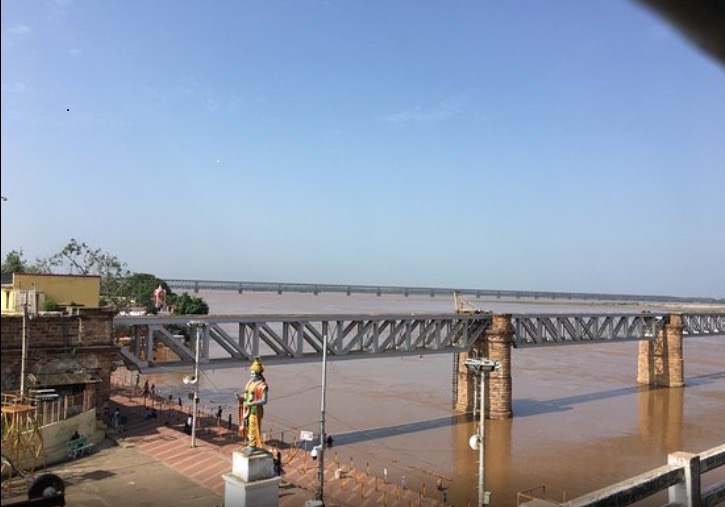Never the Twain Shall Meet is the title of two prominent Hollywood blockbusters, including a 1925s silent movie.
Dhowleswaram is a prominent place in the Godavari delta. It is here that the majestic River Godavari assumes the shape of the geometrical figure of a triangle. The Vasishta River which is on the west delta forms the boundary between the two districts of East and West Godavari.
The landscape west of Vasishta is West Godavari and locales east of it fall under the jurisdiction of East Godavari. The twain indeed do not meet, just a physical contiguity.
West Godavari district or Paschima Godavari Jilla (as it is known in Telugu) is one of the 26 districts of Andhra Pradesh. The administrative headquarters of the district is the viridescent town of Eluru. The town is sandwiched by Krishna district on the west, East Godavari (on the east) and the gargantuan Bay of Bengal on the south.
History
The Chalukyas were once the potentates of coastal Andhra (700 AD-1200 AD), with Vengi as their capital. Historical evidences of the empire have been discovered in the villages of Pedavegi and Guntupalli (Jilakarragudem).
It is noteworthy to mention that Eluru was then to become part of the Kalinga Empire until 1471. Later it fell under the Gajapathi dynasty. In 1515 Sri Krishna Deva Raya overran Eluru.
In modern times during the reign of the Britishers, West Godavari District was formed with Eluru as the headquarters.

Some Important Towns
Bhimavaram or ‘The Gift of Bhima’, named after the celebrated Pandava is a prominent township. Legends mention that around 890 AD –918 AD, an Eastern Chalukya king named Chalukya Bheema built a famous Shiva Temple here.
The town was originally called Bhimapuram but was subsequently changed to Bhimavaram. An important temple dotting the landscape of Bhimavaram and nearby towns is the Sri Someswara Temple.
The Shiva lingam at the Sri Someswara Temple is known for its unique properties. It is believed that the lingam had been installed by Lord Chandra. The colour of the linga assumes alterations as per the penetration of the lunar rays. During full moon days it dramatically transforms into shimmering white while on the day of Amavasya (no moon) it metamorphoses into black.
Sri Adikesava Embermannar Swamy Temple at Narsapur is of similar architecture and design as the renowned Sriperumbudur Temple in Tamil Nadu. Interestingly this is the only temple where Goddess Lakshmi has a name attributed to a devotee of the lord; the Goddess of Fortune or ‘Varaprasadi’, the one who bestows all wishes.
Scenically situated at the banks of River Godavari, Rajahmundry is often described as the cultural capital of Andhra Pradesh. There are twenty-nine important temples in Rajahmundry and it is among the major Hindu pilgrimage sites in India.
There is the famous Kotilingeswara Temple, a prominent religious site which was built in the 10th century. This temple has bathing ghats all around it. The loftily constructed temple attracts thousands of pilgrims.
Only by travelling across the swathes of East and West Godavari can a tourist appreciate the pristine fragrance and unalloyed culture of the place. “Whether we like it or not, we all come from someplace. And at some point, in our lives, we have to make peace with that place,” writes the author Jeffrey Stepakoff.
Ravi Valluri is working as the CEO of Chhattisgarh East Railway Ltd. and is a faculty of the Art of Living.







